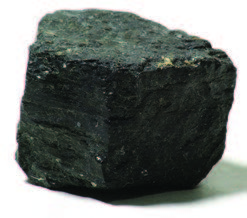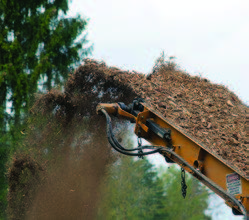Tech Briefs
Savannah River National Laboratory
Biomass and Coal into Liquid Fuel with CO2 Capture
A scientist at the Savannah River National Laboratory has developed a new and efficient process to produce biofuels from coal and other biomass. The new single-step hydrolysis process co-converts coal and any biomass to a liquid fuel while generating a high purity carbon dioxide as a byproduct.
For most of the twentieth century, there have been numerous methods to convert coal to liquid. The three primary methods have been pyrolysis/carbonization, hydrogenation, and indirect gas–to-liquids (Fisher-Tropsch). These methods are typically energy intensive, multi-step or economically inefficient. This new invention could have economic significance as it eliminates costly hydrogen production in coal liquefaction. It also converts lignin and cellulose easily which are unconvertible in biomass fermentation.

Coal
Background
The new liquefaction method involves the addition of a proprietary catalyst with water and autoclaved at 200-350 degrees centigrade to yield a liquefied product that is soluble in tetrahydrofuran. The process, which can substitute water for an alcohol, has been found to generate a 95 percent liquid yield with a nearly pure recoverable carbon dioxide byproduct. Data analysis of this product from coal has shown an increase in hydrogen and carbon content with a decrease in sulfur, nitrogen, oxygen and ash.
This technology has been developed with data generated to support the research. Studies continue with various biomaterials. This research is ready for scale-up or pilot plant operations.

Woodchip Production
At a glance
- Single-step process applicable to a variety of feedstocks
- Pure CO2 by-product
- High yields
- No hydrogen required
- U.S. Patent 8,674,152

Partnering Opportunities
SRNL invites interested companies with proven capabilities in this area of expertise to develop commercial applications for this process or product under a cooperative research and development agreement or licensing agreement. Interested companies will be requested to submit a business plan setting forth company qualifications, strategies, activities, and milestones for commercializing this invention. Qualifications should include past experience at bringing similar products to market, reasonable schedule for product launch, sufficient manufacturing capacity, established distribution networks, and evidence of sufficient financial resources for product development and launch.
Download Tech Brief
Contact Information
Savannah River National Laboratory
E-mail: partnerships@srnl.doe.gov